tinea versicolor vs vitiligo
 Is it tinea versicolor or vitiligo? • Vitiligo Cover
Is it tinea versicolor or vitiligo? • Vitiligo CoverTinea Versicolor We include products that we believe are useful to our readers. If you buy through links on this page, we can win a small commission. What is versicolor tinea? The Malassezia fungus is a type of yeast found on the surface of the skin. It usually doesn't cause health problems. In fact, many of the microbiotes (or microscopic organisms), including yeasts such as Malassezia, who live in large communities in their skin help protect them from infections and other pathogens that can cause damage or disease. They live alongside their body cells in symbiotic relationships, with skin cells and small organisms that support and benefit each other. Sometimes, however, this yeast can grow out of control and affect the natural color or pigmentation of your skin. When this happens, you can develop skin patches that are lighter or darker than the surrounding skin. This condition, which is not contagious, is known as tinea versicolor, or pityriasis versicolor. The condition occurs when a type of yeast of the Malassezia family causes an infection or suppresses your immune system. Tinea versicolor occurs when Malassezia grows rapidly on the surface of the skin. Doctors are not sure why this happens. Some factors can promote the growth of this yeast in the skin, including: Tinea versicolor can occur in people of all ethnic origins, and is more common in adolescents and young adults. Adults are more likely to develop versicolor tinea if they visit an area with a subtropical climate. The discoloured skin patches are the most remarkable symptom of versicolor tinea, and these patches usually appear in the arms, chest, neck or back. These patches can be:Versicolor type that develops in people with dark skin can result in loss of skin color, known as hypopigmentation. For some people, the skin may darken instead of turning on. This condition is known as .Some individuals who develop versicolor tinea have no significant change in their skin color or appearance. In addition to changes in the color of your skin, you can also experience spicy skin. Similar conditions Some conditions with superimposed symptoms, such as , are often wrong for versicolor tinea. However, the vitiligo may differ from versicolor tinea in several notable ways, including: The eruption caused is also similar to versicolor tinea, but this eruption is usually preceded by a "heral patch", a solitary red patch of squamous skin that appears a few days or weeks before the eruption. This eruption typically appears in the form of a Christmas tree at the back. It is not known what causes this condition. But, as a versicolor tinea, it is not harmful or contagious. Several environmental and biological factors can put you at greater risk for this condition, including: If you have symptoms of versicolor tinea, you may choose to treat the condition yourself. Antifungal drugs for free sale (OTC) can remove discolored skin patches. However, you should contact your doctor if these treatments are not effective. You may need a prescription medication to control your symptoms. Are you looking for doctors with the most experience treating versicolor tinea? Use the doctor's search tool below, powered by our partner Amino. You can find the most experienced doctors, filtered by your insurance, location and other preferences. Amino can also help you book your appointment for free. Talk to your doctor if you develop patches of strange colors on your skin and cannot treat them at home. Your doctor will examine your skin and know if you have versicolor tinea looking at the patches. If a diagnosis cannot be made by looking at the skin, the doctor may take a skin scrap. A skin scrape removes the skin cells to test it by gently scratching the skin. Cells are seen under a microscope to see if they contain the yeast that causes this condition. Your doctor may perform a potassium hydroxyde microscopy (KOH). In this procedure, your doctor takes a sample of skin, places it in a microscope slide with a 20 percent solution of KOH, and looks for yeast fungi or hiphae under a microscope. Your doctor may also take a sample, or tissue, of the affected skin and test fungi in the outer skin layer. A sample of the fungus on the skin can also be tested in a fungal culture to see if you have the condition. Your doctor may also use a skin test. This special machine, which uses ultraviolet light, keeps 4 to 5 inches of your skin. If the yeast is present, the affected skin will appear yellow or green under the light. If your symptoms are not serious, you may choose to treat your condition at home. OTC antifungal or shampoo creams can be effective in killing the infection. Examples of OTC medications that can be used to treat versicolor tinea include: If you are looking for medical care for versicolor tinea, your doctor may prescribe different medicines, such as topical creams that can be applied directly to the skin. Examples include: Your doctor may also prescribe pills to treat versicolor tinea, including: If you are diagnosed with versicolor tinea, treatment will improve your long-term perspective. However, even after you remove the infection, your skin may remain discolored for several weeks or months after treatment. Your infection can also return when time becomes warmer and wet. If your condition returns, your doctor may prescribe medication once or twice a month to prevent symptoms. It may be difficult to prevent recurrence of this condition. If you were diagnosed with versicolor tinea and have successfully treated, there are steps you can take to prevent future infections. These include:You can also help prevent versicolor tinea by using a prescribed skin treatment during the time of the year when you are more susceptible to it. Q: What natural remedies have been shown to help versicolor tinea? A: Versicolor type is a common fungal skin infection that can be easily treated by your doctor. There are steps you can take to help too, including: • Avoid excessive heat and sweat. • Use a selenium shampoo every few weeks. Other natural resources, or not medication, have not been well studied and have not clearly shown to be effective for this purpose. Last medical review on October 24, 2016Read this following

Tinea Versicolor vs. Vitiligo: Skin Pigment Symptoms & Treatment
What are the diseases mistaken for Vitiligo?

Tinea Versicolor: Causes, Symptoms, & Treatment

Probably have Vitiligo. Doctor Hopes it's Pityriasis versicolor (a fungus that causes white patches). : Vitiligo
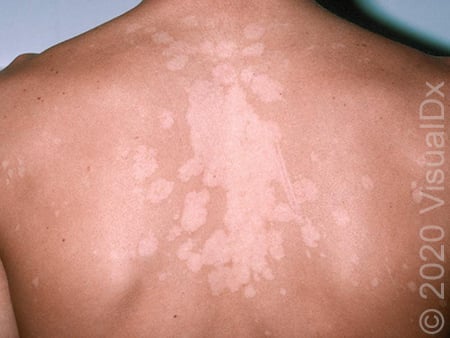
Maybe it's NOT vitiligo!

Tinea Versicolor? Vitiligo? What started as small circles this past Summer has slowly morphed into this. I have had 3 miscarriages this past year and think it may be tied to that?

Vector Clipart - Skin conditions having an external resemblance to vitiligo. Vector Illustration gg102900138 - GoGraph
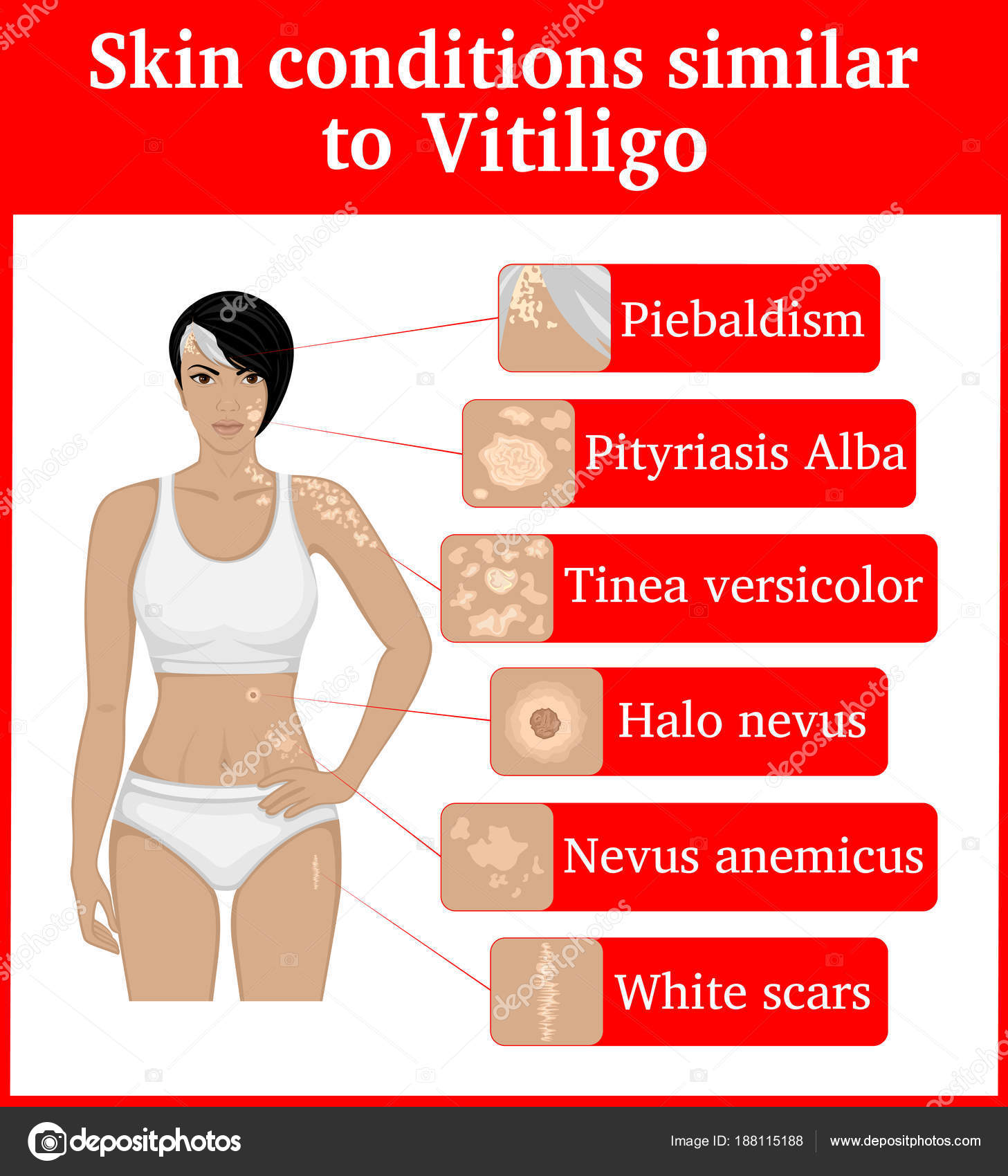
Six Skin Conditions Having External Similarity Vitiligo Vitiligo Tinea Versicolor ⬇ Vector Image by © scio21.ukr.net | Vector Stock 188115188

4 Common Reasons Behind Your Hypopigmentation Woes and How They Can Be Treated
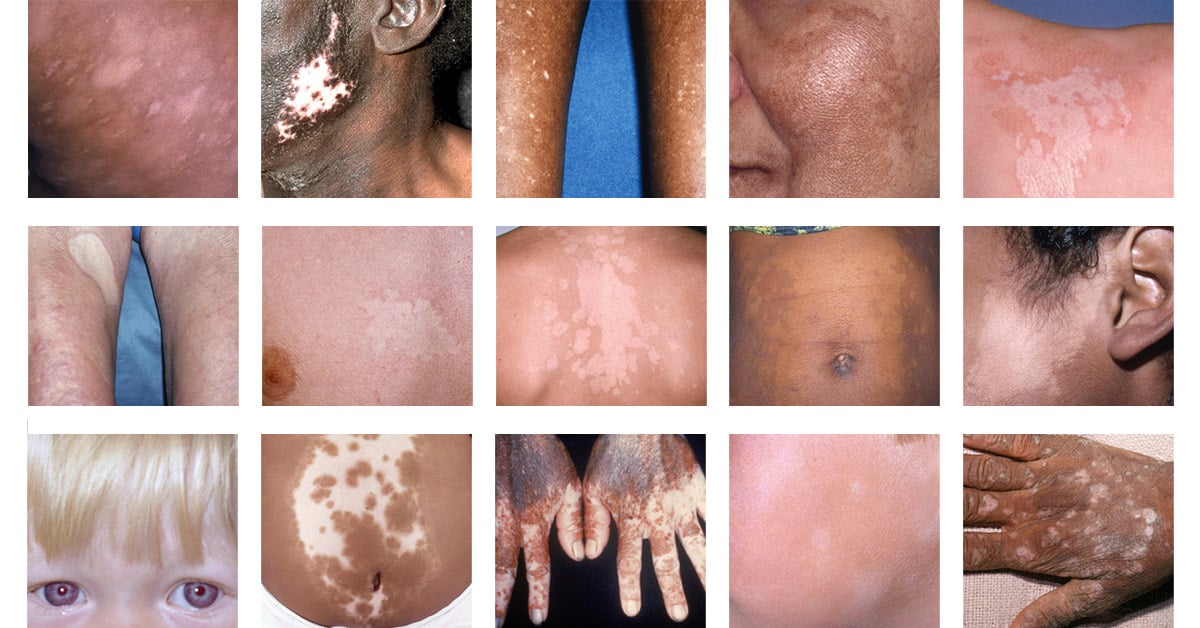
Maybe it's NOT vitiligo!
Is this vitiligo or tinea Versicolor? Also have a larger patch on groin and armpit. : FungalFolliculitis

Skin differentials - Pityriasis versicolor vs vitiligo - Pulse Today
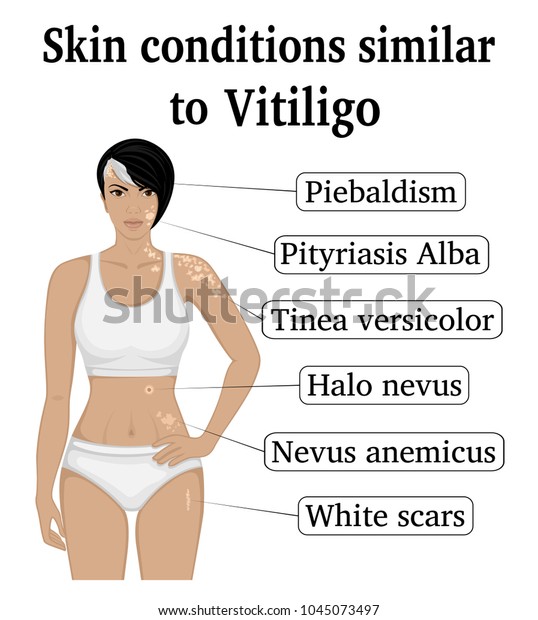
Six Different Skin Conditions Similar Vitiligo Stock Vector (Royalty Free) 1045073497

VITILIGO or nah? | Nik Scott - YouTube

Skin differentials - Pityriasis versicolor vs vitiligo - Pulse Today

OTC Products For Skin Disorders Made by alaa belal. - ppt video online download
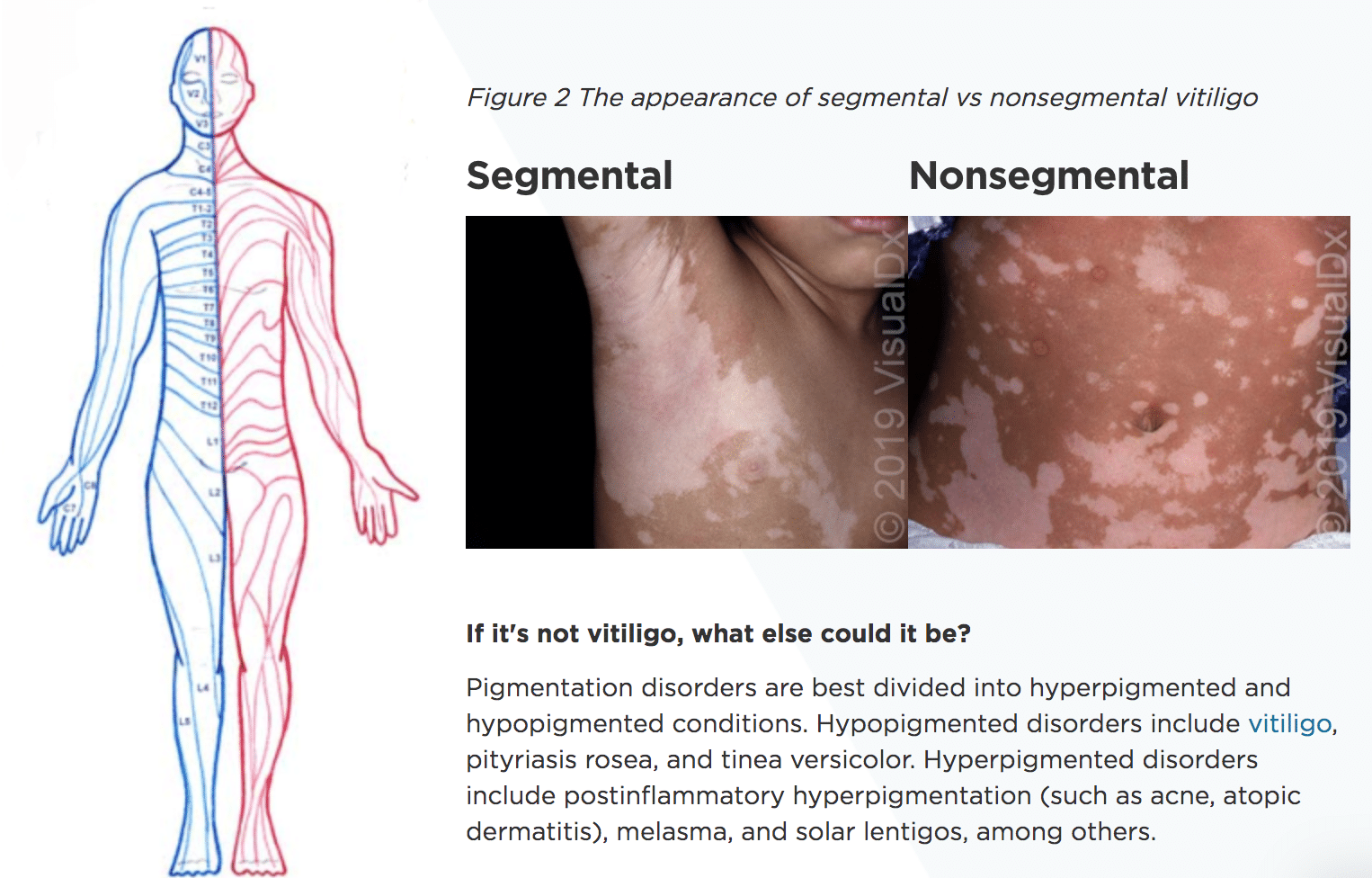
Spotting the Diagnosis of Vitiligo | VisualDx

Vitiligo - WikEM

Is it tinea versicolor or vitiligo? • Vitiligo Cover
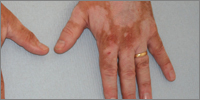
At a Glance - Pityriasis versicolor versus vitiligo | GPonline
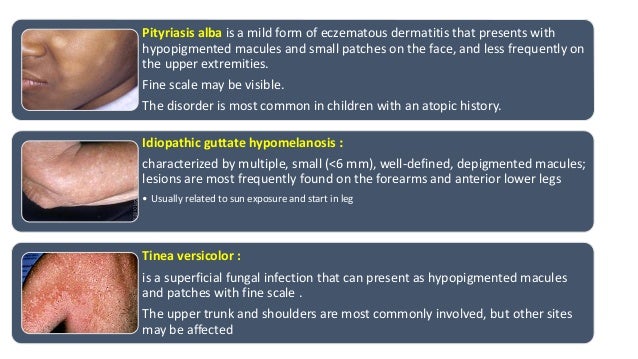
Vitiligo

Tinea Versicolor: Causes, Symptoms, & Treatment

Pin on Beauty

Skin conditions having an external resemblance to Vitiligo, Art Print | Barewalls Posters & Prints | bwc55722830
Who has experience with treating tinea versicolor? How do I know it's not vitiligo? - Quora
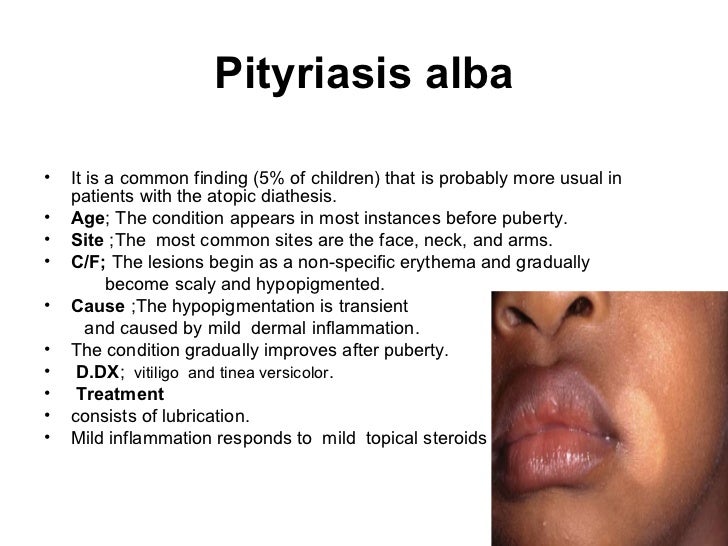
dermatology.Disorders of skin color.(dr.ali)

Diagnostic Errors in Patients With Skin Findings

Pigmentation Issues: Vitiligo & Pityriasis Versicolour - LOOKFANTASTIC

Tinea Versicolor Homeopathic Treatment | Causes, Symptoms and Diagnosis Explained by Dr. Shah

93 Tinea versicolore and fungus ideas | nail fungus, toe fungus, toenail fungus remedies

White spots on the face: Possible causes and treatments
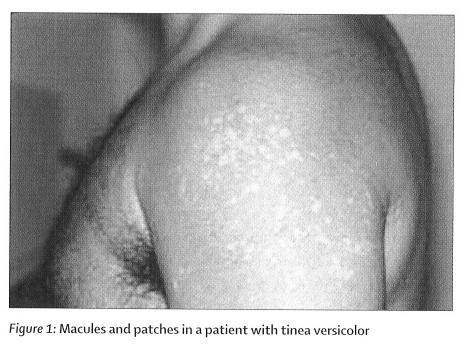
Tinea Versicolor - Physiopedia
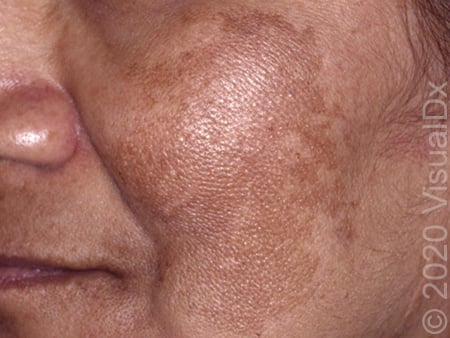
Maybe it's NOT vitiligo!

A Practical Approach to the Diagnosis and Treatment of Vitiligo in Children | American Academy of Pediatrics

Tinea Versicolor vs Vitiligo – Causes, Symptoms, Treatment

Inflammatory vitiligo versus hypopigmented mycosis fungoides in a 58-year-old Indian female Soro LA, Gust AJ, Purcell SM - Indian Dermatol Online J
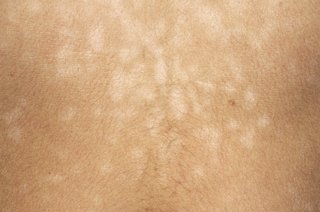
Pityriasis versicolor - NHS

Pigmentation Disorders: Diagnosis and Management - American Family Physician
Differential diagnosis | Dermatology Education

Pityriasis versicolor - NHS
Posting Komentar untuk "tinea versicolor vs vitiligo"